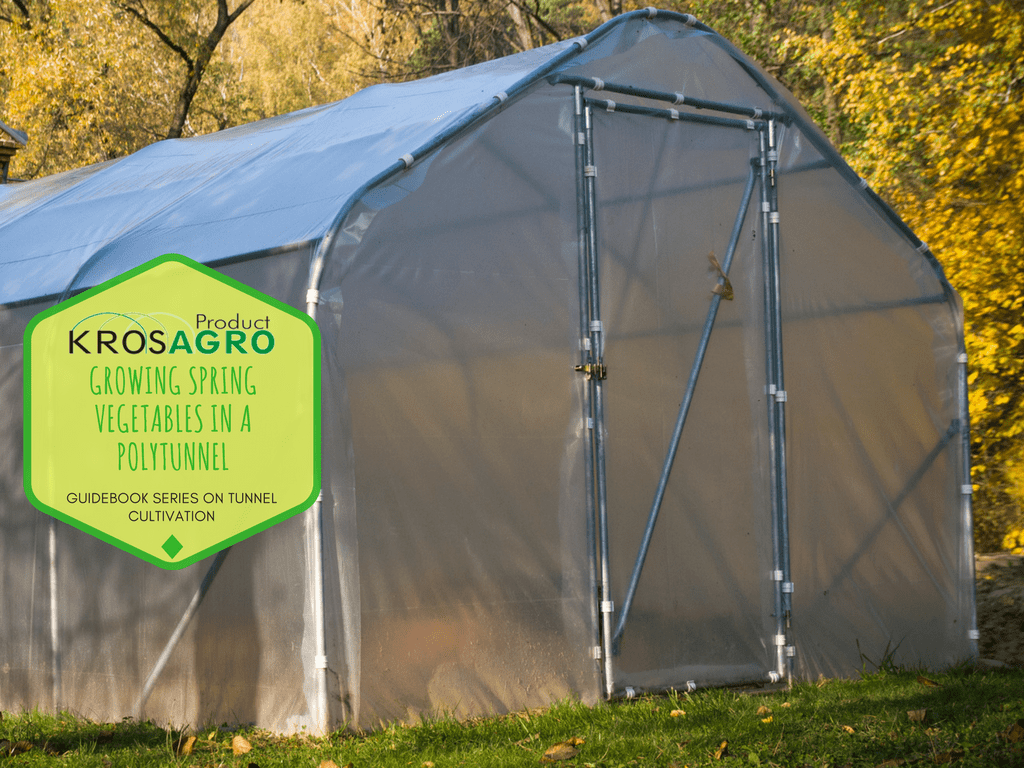Many people wait for spring to eat fresh vegetables again. In stores, though, spring vegetables are beginning to appear. However, it should be remembered that not all of them are healthy and positively affect your body. Unfortunately, most have been treated with fertilizers to accelerate growth, in order for them to reach the shelves as early as possible. Of course, not all of the available crops are the same. All you need to do is choose spring vegetables from reliable sources, reputable producers or cultivate them yourself under cover.
After the winter, many people show signs of weakness. Which is why the focus should be on providing the body. With a real supply of vitamins contained, among others, in spring vegetables. You can grow spring vegetables in a polytunnel, even though it requires some effort. The first crops available in supermarkets are expensive. Developing a modern vegetable garden can save a lot of money for any household.
This time, in this Krosagro guide on crops under cover. We will review how to plant, cultivate and grow spring vegetables in a polytunnel step by step.
Contents
Spring vegetables in the ground
The early spring is characterized by frequent temperature fluctuations. Short days and frequent frost are unfavorable conditions for the growth of plants. To obtain crops from the ground, sow long day plants – resistant to low temperatures and able to survive frosts.
If the weather is kind, you can start the growing season in the second half of March. Adapted plants will be : radish, spinach, kale, dill and lamb’s lettuce. As their strength enables them to continue to grow at 5°C . Importantly, they are able to survive the cold. However, it is worth protecting the beds with agro textile, so that plants are safe in case of prolonged frost.
If there is still a bit of space, you can sow butter lettuce and endive. Both plants can withstand temperatures of up to -5 ° C, however, in contrast to the aforementioned plants, they should be grown from seedlings.
Having a foil tunnel at your disposal, you can produce the seedlings yourself or buy them in the store. It is worth remembering that preparing seedlings is not the easiest task.
Spring vegetables under cover
February and March are months during which snow is still possible, and if not , you can always expect frost. Plants resistant to low temperatures should be protected so that they avail of favorable conditions for proper development. Optimal conditions for crops can be created in a foil tunnel, improving later harvest quality and quantity.
Growing plants in the ground is risky, and the weather can be unpredictable. The greenhouse provides to some extent independence from the atmospheric phenomena. Heated or cold tunnels are an ideal place for plants of any type, especially thermophilic, which thrive under cover. In addition , seedlings can be prepared in a space reserved inside the greenhouse.
Foil tunnel to grow spring vegetables
How and which foil tunnel to choose? Each gardening enthusiast will have different needs and requirements according to the available space, so buying a greenhouse should be guided by two criteria. Of course there is still a whole bunch of other guidelines, which we reviewed in the article “8 questions about polytunnels“, where we clarify the pre-purchase process in order to choose a functional garden structure.
Certainly, for a home garden or plot, you can look for a strong and simple structure. Both features can be found in hobby foil tunnels, which can be divided into closed (single-vegetation) and ventilated (multi-vegetation). The first type is a structure with one door or two , with a hot dip galvanized steel frame on which the foil is applied. The main feature for multi-vegetation tunnels is the air vents on both sides . Using a crank, curtains are lifted and air circulation can be achieved. This is an effective solution when growers need to get rid of excess heat or humidity in the facility. On both sides of the tunnel where the foil is folded, an insect net is fixed, making it difficult for pests to get in. In single-vegetation tunnels, in order to obtain a similar ventilating effect, the doors can be left opened.
Hobby tunnels
Among the important advantages of these hobby tunnels, let’s highlight the fact they are made of hot-dip galvanized steel. What does it mean? Well, the owner of such a structure can proceed with all his duties without fearing corrosion affecting the pipes and steel profiles. The increased humidity inside will not weaken the structure and will not lead to corrosion. The steel frame fixed to the ground withstands strong gusts of wind, storms, hail and many other harmful weather hazards. It can also be left outside in winter; all you need to do is remove the foil as the frame will not get damaged in any way.
